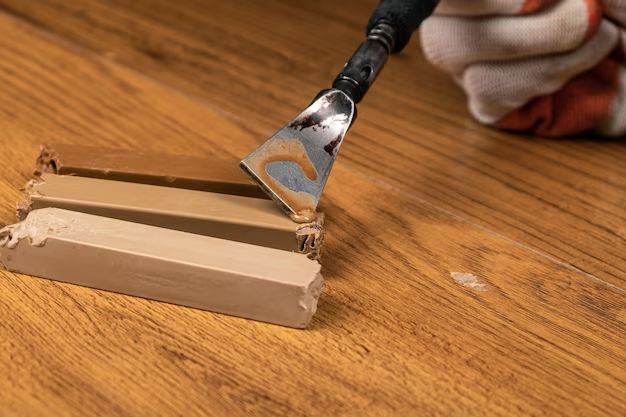Page Contents
Quick Answer
Both waxing and polishing can help protect and beautify hardwood floors, but they work in different ways. Waxing fills in micro-scratches and creates a protective coating, while polishing smooths the surface and removes minor scratches and scuffs. In general, wax is best for unfinished, more porous floors, while polish is better for polyurethane-coated hardwood. For high traffic areas, wax may provide longer-lasting protection. But polishing is often easier and faster for quick touch-ups. Consider your floor type, condition and desired look when deciding between waxing and polishing.
Waxing Hardwood Floors
Waxing hardwood floors provides a protective seal and lustrous shine by filling in micro-scratches and pores in the wood grain. The main benefits of waxing include:
- Enhances natural pattern and color of wood
- Fills in minor scratches
- Provides a protective barrier against moisture and spills
- Lasts 3-6 months on average with periodic buffing
- Ideal for unfinished, reclaimed or porous floors
Wax is available as a liquid or paste formula. Liquid wax is easier to apply but may require more frequent recoating. Paste wax provides heavier protection but is more labor intensive to apply. Here are some tips for waxing hardwood floors:
- Clean floor thoroughly and allow to fully dry first
- Apply wax in thin, even coats following the grain
- Allow 30-60 minutes drying time between coats
- Buff with a cotton cloth or floor buffer to create sheen
- Apply 2-3 coats for best durability
- Refresh every 3-6 months as needed
Waxing is best for unfinished hardwood or more porous surfaces. It may produce a slight yellow or amber tone. Frequent waxing can lead to buildup over time. When wax starts feeling gummy or tractionless underfoot, stripping and reapplication is needed.
Polishing Hardwood Floors
Polishing uses fine abrasives to buff out blemishes in the floor’s polyurethane coating. It creates a smooth, glossy surface and removes minor scratches, scuffs and swirl marks. Key benefits of polishing include:
- Removes minor scratches and blemishes
- Restores glossy shine to dull floors
- Quick and easy do-it-yourself option
- No drying time or buildup
- Ideal for factory-finished floors
Floor polish comes as oil or water-based. Oil polish leaves a richer, wet-look shine but water-based dries faster. Here are some tips for polishing hardwood:
- Sweep and lightly damp mop floor before polishing
- Apply polish sparingly to floor pad or directly to floor
- Buff in overlapping figure-8 motions
- Use lightweight polisher or buffer for large areas
- Reapply 1-2 times per year as needed
Polishing works best on polyurethane finishes and may slightly lighten or warm natural wood tones. It does not offer as much protection as waxing. Frequent polishing in high traffic areas can wear down the finish over time. When the floor starts looking dull even after polishing, it’s time to recoat the polyurethane.
Wax vs. Polish Comparison
| Wax | Polish | |
|---|---|---|
| Protection | Fills pores and scratches for added protection | Minimal – mostly cosmetic |
| Application | Applied in thin coats, buffed when dry | Applied and buffed out immediately |
| Drying Time | 30-60 minutes between coats | None |
| Durability | 3-6 months with periodic buffing | 1-2 months |
| Buildup | Heavy waxing can lead to buildup over time | No buildup, but can wear down finish |
| Sheen | Medium to high gloss | High gloss shine |
| Floor Types | Best for unfinished, porous floors | Best for polyurethane coated floors |
As shown in the table, wax provides longer-lasting protection by penetrating into the wood grain, while polish offers easy spot treatment to revitalize shine. Wax may alter the natural tone slightly while polish maintains true wood colors.
Should I Wax or Polish My Hardwood Floors?
Deciding between waxing and polishing depends on your floor type, condition and desired appearance:
- Unfinished wood – Wax fills pores and creates a protective seal
- Factory-finished floors – Polish buffs out swirls and scratches in polyurethane
- High traffic areas – Wax withstands daily wear better long-term
- Spot touch-ups – Polish for quick fixes between deeper cleanings
- Faded finish – Wax boosts luster on worn floors
- Damaged finish – May need complete resanding and refinishing
- Matte finish – Polish or low-gloss wax to maintain flat sheen
- Allergen-free – Water-based polish avoids fumes
Test products in an inconspicuous area first. Combining wax and polish or using the wrong method for your floors could damage the finish. Maintain protection by dust-mopping daily and cleaning as needed with floor cleaner compatible with your chosen wax or polish.
Conclusion
Wax and polish both enhance hardwood floors in slightly different ways. Wax provides more durable protection by penetrating into the wood itself. Polish creates instant shine by smoothing the polyurethane coating. Consider factors like your floor type, high vs. low traffic areas, desired sheen level, and convenience when deciding whether to wax, polish or use a combination approach. Properly caring for your floors with the right products and methods will keep them looking beautiful for years to come.
